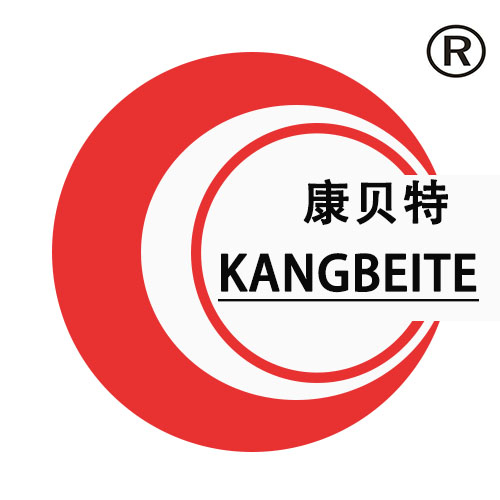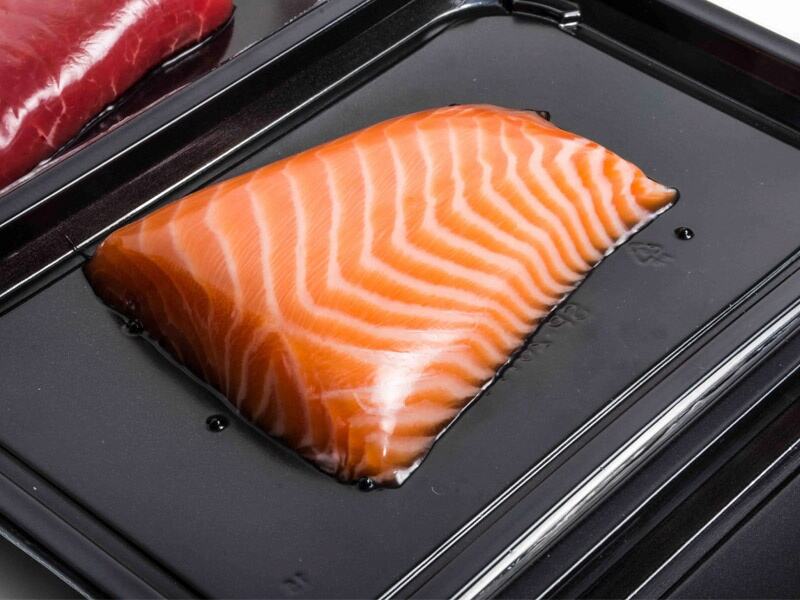Inzicht in Vacuum Skin Packaging Technologie
Hoe VSP werkt: Van luchtverwijdering tot strak gesloten verzegeling
VSP Vacuum Skin Packaging, bekend als vacuumverpakkings technologie, is een revolutie in de voedselconservering, dankzij de uitstekende verlenging van de houdbaarheid van voedsel. De eerste stap is het verwijderen van lucht, waarbij een hoogwaardige vacuümachine bijna al de lucht uit de verpakking haalt. Dit is erg belangrijk omdat het de mogelijkheid van bacteriegroei vermindert, wat het product fris houdt. Het vacuüm helpt ook om een strakke sluiting te creëren door het hoge barrièrfilm rondom de vorm van het product te formeren. Modern apparatuur in VSP wordt gemaakt om deze nauwkeurigheid te behouden. Verschillende voedselveiligheidsinstanties benadrukken het invoeren van kritieke temperatuurbesturingen tijdens het verzegelingsproces. Juist toegepaste temperatuur zorgt ervoor dat, met hoge barrièrfilms, de sluiting niet alleen strak is, maar ook de kwaliteit en veiligheid van het product behoudt terwijl natuurlijke smaken, geuren en textuur worden bewaard.
Hoofdbestanddelen: High-Barrier Films en Snelle Opererende Machines
Hoge-barrièrelagen fungeren als de belangrijkste ondersteuning in VSP, waarbij het product wordt beschermd tegen zuurstof en vocht, en de houdbaarheid wordt verlengd. Deze lagen zijn ontworpen om de sterkte en duurzaamheid te hebben die nodig zijn om strak aan het product aan te passen. AP5306E Snelle vacuümverpakkingsmachines zijn een noodzakelijk onderdeel van VSP, ze zijn efficiënt en betrouwbaar. Ze kunnen op hoge snelheden draaien, tienden van duizenden producten per minuut verpakken, waardoor ze de perfecte oplossing zijn voor verpakkingsovereisten met grote volumes. Brancherapporten geven aan dat VSP een betere verpakkmethode is dan conventionele methoden voor het beschermen van de kwaliteit van voedsel en het verlengen van de houdbaarheid. Bijvoorbeeld, VSP-verpakte producten kunnen een langere houdbaarheid hebben dan producten die met traditionele methoden worden verpakt, zoals vastgesteld dat roodvleesproducten tot wel eenentwintig dagen langer meegaan met VSP.
Hoofdvorte van Vacuum Skin Packaging
Uitgebreide houdbaarheid door zuurstofeliminatie
Vacuümhuidverpakking (VSP) vermindert de blootstelling aan zuurstof sterk, wat bederf beperkt en houdbaarheid verlengt. Door lucht uit de verpakking te verwijderen, verlengt VSP de houdbaarheid van het product en wordt oxidatie beperkt die van invloed kan zijn op de kleur van het product. Onderzoek van agrarische instellingen wijst uit dat VSP-afgesloten producten een significant langere houdbaarheid hebben dan niet-VSP-producten. GEBAKKENWAREN VERPAKKTE LEVERINGEN Verpakte levensmiddelen, bijvoorbeeld vleesproducten verpakt in VSP, hebben tot 80% meer verkopen gekend vanwege de verlengde houdbaarheid van de voedingsmiddelen, zoals bewezen in bepaalde supermarktketens.
Verbeterde Productpresentatie en Merkappeal
De duidelijke en strakke afsluiting van VSP verhoogt aanzienlijk de consumenten-aangetrekkelijkheid, door het verse en kwalitatieve karakter van een product te tonen aan consumenten. Merken die VSP gebruiken, zoals Booths, hebben bewezen dat VSP invloed heeft op de koopbeslissingen van consumenten, door de visuele aantrekkelijkheid op de plank te verbeteren en onaantrekkelijke vloeistoffen in het verpakking te minimaliseren. Deze verpakking is visueel aantrekkelijk voor klanten en versterkt ook merkzichtbaarheid door mogelijkheden voor aangepaste merkidentiteitsdecoratie, waardoor de marktconcurrentie wordt verhoogd.
Gereduceerd voedselverspilling en afhankelijkheid van conserveringsmiddelen
De mogelijkheid om de houdbaarheid te verlengen bijdraagt aan minder voedselverspilling, omdat er minder bederf is, een voordeel dat wordt ondersteund door groene studies die laten zien dat het een positieve invloed heeft op milieu en duurzaamheid. Bovendien betekent de langere opslagperiode dat er minder additieven nodig zijn, wat gunstige effecten heeft op de gezondheid. Hierdoor krijgen consumenten een frisser product dat minder chemisch is behandeld, in overeenstemming met de groeiende trends in gezondheid en milieubewustzijn.
Verbeterde verzendefficiëntie met compact verpakkingsoplossingen
VSP biedt voordelen voor een betere leverings-efficiëntie voor het schip door een kleiner volume dankzij een compacte verpakking en bespaart verzendkosten door de stouwage van een vaartuig te maximaliseren. Deze afname staat in overeenstemming met logistieke studies die de belangrijke rol onderstrepen van kleine verpakkingen om het beste gebruik te maken van de opslagplaats en transportkosten te minimaliseren. De compacte verpakking maakt het systeem ook veel gemakkelijker te hanteren en op te slaan, waardoor de logistieke operatie veel eenvoudiger wordt.
Door VSP toe te passen, kunnen bedrijven verschillende voordelen genieten, zoals verbeterde productconservering, visuele aantrekkelijkheid, duurzaamheid en logistieke efficiëntie, wat bijdraagt aan algehele klanttevredenheid en marktsucces.
VSP versus MAP: Kiezen voor de juiste verpakkingoplossing
Houdbaarheidsvergelijking: VSP's superieure zuurstofcontrole
MEPs en MAPMEPs zijn ontworpen om de houdbaarheid van verse voedingsmiddelen te verlengen en de fysieke ontwerpen kunnen zowel invloed hebben op de manier waarop de gewenste houdbaarheid wordt bereikt als op het zuurstoftransmissiepad. VSP heeft een goede reputatie omdat het bijna al het beschikbare zuurstof uit de verpakking kan verwijderen en zo bacteriegroei en bederf kan remmen. Tegelijkertijd vervangt MAP zuurstof door gassen die de bacteriegroei verminderen. Industrieonderzoek wijst uit dat VSP kan helpen om vlees tot twee tot drie keer zo lang vers en levendig te houden vergeleken met wanneer het met MAP wordt verpakt. Voedselveiligheidsautoriteiten stellen dat VSP voedsel langer vers houdt, waardoor de houdbaarheid met tot 50% langer wordt ten opzichte van MAP.
Productiesnelheid: Automatische Vullmachines in MAP vs. VSP
In termen van productiesnelheid is VSP het beste. VSP vacuümverpakkingsmachines werken op zeer hoge snelheden in vergelijking met MAP-verpakking, waarvoor speciale gassen aan de omgeving moeten worden toegevoegd met behulp van automatische vultmachines. Snel werkende vacuümverpakkingsmachines worden gebruikt in VSP. Recent onderzoek op industriële gebieden wijst uit dat VSP de verpakkingstijd rechtstreeks vermindert en een toename van 30% in verpakkingssnelheid kan bereiken in vergelijking met MAP-systemen. Deze capaciteit kan van vitaal belang zijn voor grote voedselverwerkERS die naar operationele eenvoud en kostenbesparingen zoeken.
Kostenefficiëntie en uitrustingsoepelheid
De aanname van VSP-apparatuur biedt aanzienlijke kostenvoordelen en flexibiliteit. Hoewel de initiële investeringskosten voor VSP-technologie mogelijk hoger zijn dan voor een MAP-systeem, zijn de exploitatiekosten meestal lager. In de meeste VSP-systemen zijn de verbruiksartikelen voor verpakkingen minimaal - gassen of extra verzegelingsmateriaal worden niet vaak aangeschaft. Bovendien zijn VSP-modellen flexibeler, met de mogelijkheid om verschillende maten en soorten producten te verwerken, waaronder verse zeevruchten en pluimvee, zonder problemen. Deze flexibiliteit verminderd ook de rompslomp van inventarisbeheer en kan zelfs extra kostenbesparingen opleveren door afval en opslagvereisten te minimaliseren.
Industriële toepassingen van hoogwaardige VSP-systemen
Verpakking van gevogelte en vlees: behoud van versheid
Vacuümhuidverpakking (VSP) heeft de verpakkingsector voor pluimvee- en vleesproducten ingrijpend veranderd door de houdbaarheid van producten te behouden en bacteriële aantallen te verminderen. Daarnaast verlengt VSP's vermogen om zuurstofblootstelling te reduceren de houdbaarheid dramatisch, zodat vleesproducten langer vers blijven en aantrekkelijker zijn. Brancheterm: 'De vacuümsluiting van VSP is zeer effectief in het remmen van de groei van micro-organismen, een belangrijke oorzaak van bederf bij vlees.' Bovendien dient VSP-verpakking als een barrière tegen luchtgedragen verontreinigingen, wat de voedselveiligheid verhoogt en consumentenvertrouwen vergroot. Het past ook bij de trend naar duurzame en gemakkelijke verpakkingoplossingen in de vleesindustrie, zegt het bedrijf. 89 Op deze manier voldoet VSP 90 aan de toenemende consumentenvraag naar gezondere, duurzamere voedingsmiddelen die minder conserveringsmiddelen en minder afval gebruiken.
Visserijbescherming: lekkagebestendigheid en HPP-compatibiliteit
Visproductenverpakking vereist betrouwbaarheid en lekbescherming voor kwaliteit en een langere houdbaarheid, waarvoor VSP is ontworpen. VSP-technologie zorgt voor sterke hermetische sluitingen die de delicate kenmerken van visproducten kunnen beschermen en waterverlies en bederf voorkomen. Deze eigenschap is cruciaal voor het conserveren en vervoeren van visproducten. Bovendien zijn VSP-systemen te combineren met High-Pressure Processing (HPP), een proces dat de houdbaarheid nogmaals verlengt zonder invloed op de voedingswaarde. Maar wanneer gecombineerd met HPP-technologie, kan VSP helpen visproducten vers te houden zonder het gebruik van chemische conserveringsmiddelen, een sterk verkoopargument voor gezondheidsgerichte consumenten. Zo'n combinatie baat niet alleen de veiligheid en kwaliteit van de eindproducten, maar breidt ook de horizon van de visindustrie uit om consumenten premium en verse producten te bieden.
Innovatie in Gerechten: Microgolvenveilig Gemak
In de snel groeiende ready meal markt speelt VSP een cruciale rol door de ontwikkeling van mikrogolvenveilig verpakkingen die de consumentenconvenientie vergroten. Dit is ook kosteneffectief: de beveiligde en manipulatiebestendige verpakkingen van VSP zijn altijd geschikt voor de mikrogolf en flexibel genoeg om de toenemende vraag naar gemakkelijke maaltijdoplossingen te dekken zonder productkwaliteit te compromitteren. Ready meals, klaar om op te warmen, hebben het bij consumpteurs geraakt die een maaltijd zoeken die eenvoudig kan worden opgewarmd; VSP biedt precies dat met zijn eenvoudig hanterbare constructie. De transparantie van de vacuumhuidverpakking verbetert het uiterlijk van ready meals en laat consumenten de kwaliteit van het product bekijken voordat ze aankopen. Uit onderzoek blijkt dat de eenvoud van bereiding en levensstijlbehoeften consumenten trekken tot VSP-verpakte maaltijden, wat bijdraagt aan de toenemende populariteit van VSP-verpakte maaltijden. Deze innovatie trekt zowel mensen in beweging als draagt bij aan de industrie's inspanningen om verantwoordelijke verpakkingoplossingen te ontwikkelen.

